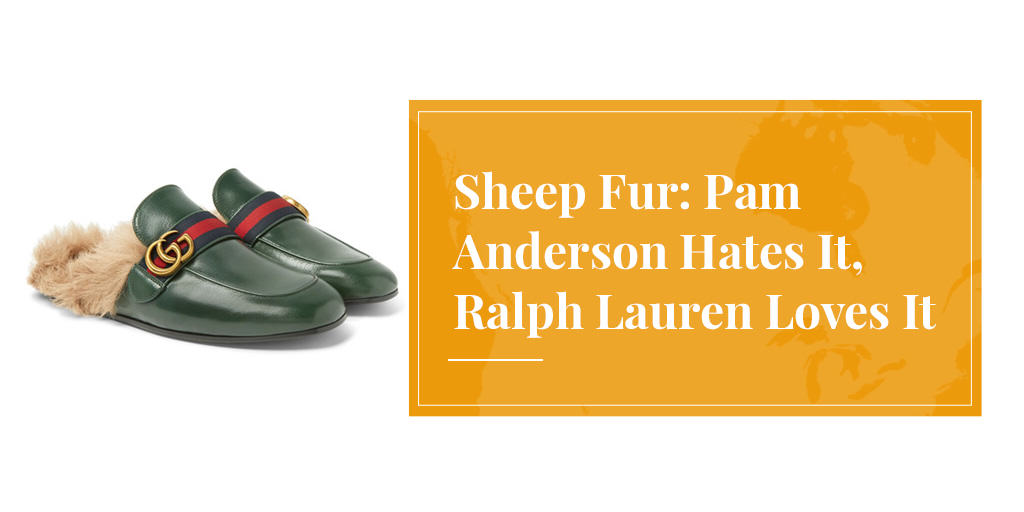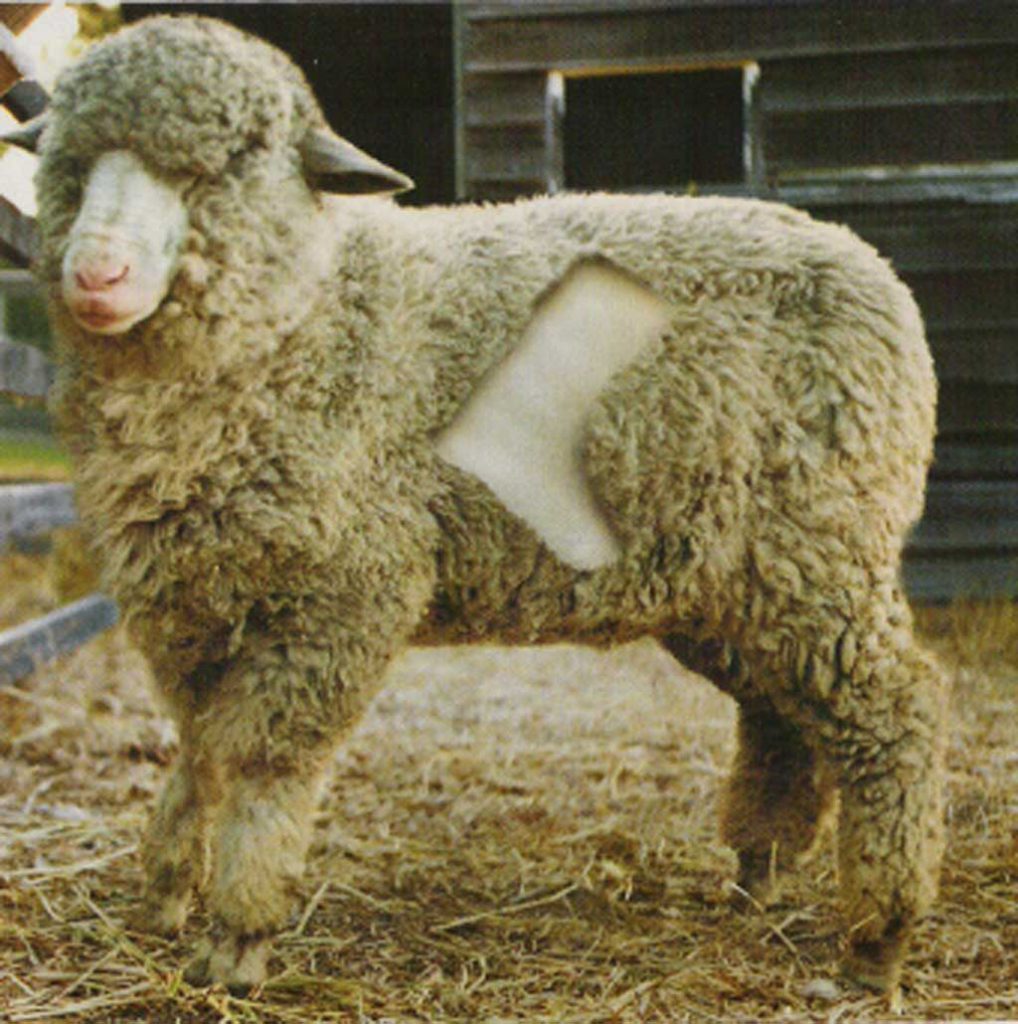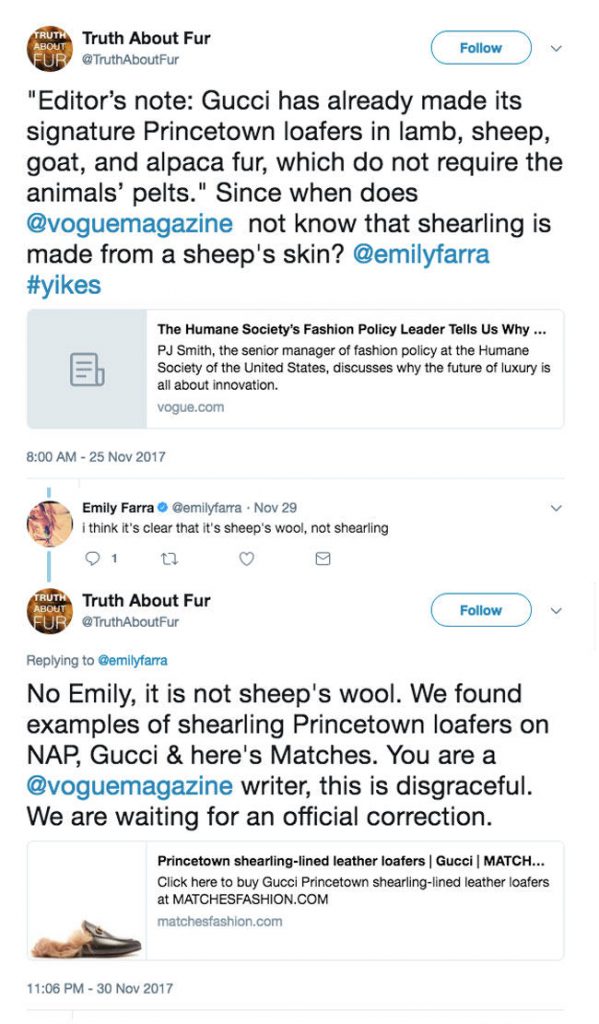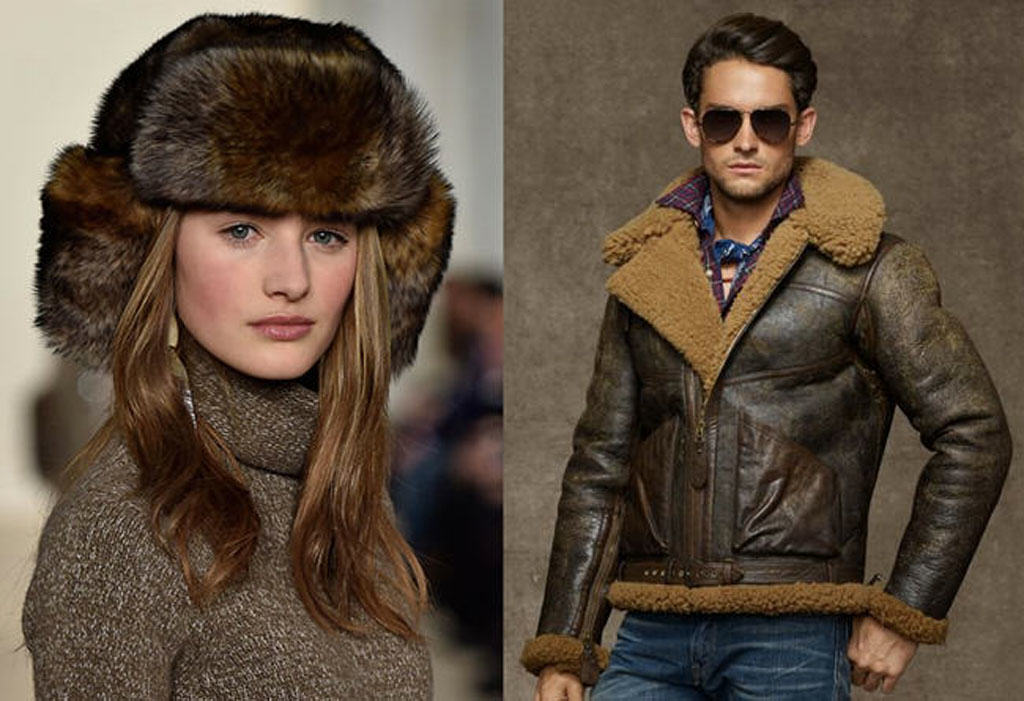
Something that keeps writers like me employed is that no matter how good we are at spreading the truth, when the next generation comes along there are things we have to teach all over again. Such is the case with the clothing material popularly known as sheepskin, lambskin or shearling. And the lesson that needs constant repetition is that it is not wool, it is sheep fur, and animals die to produce it.
In defence of those who find this confusing, it’s true that the word “fur” is popularly used to mean the skin and hair (or pelt) of particular types of animal, like mink or fox. But in fact, every hairy animal can provide fur, including sheep, which do so in vast amounts. We just don’t call it fur. Sheep fur is variously called sheepskin or lambskin, while the fur of a sheep which has been recently sheared is called shearling.
And just for total clarity, when we use sheep hair without the skin attached, it’s called wool, and no animals are killed to produce it.
In the context of the great fur debate, these are important distinctions because many people are wearing fur without even knowing it, including some people who should know better.
Pam’s Ugg Boots

The most memorable case of someone not being able to put two and two together was Pamela Anderson. During her Baywatch days, she almost single-handedly turned Ugg sheepskin boots into a major fashion trend. She then took up the cudgels for PETA, campaigning against the practice of mulesing sheep while still wearing her trademark Uggs.
For some unknown reason, PETA decided not to tell Pam what Uggs were made of, but finally the penny dropped. “I’m getting rid of my Uggs,” she wrote on her website in 2007. “I feel so guilty for that craze being started around my Baywatch days. I used to wear them with my red swim suit to keep warm never realizing that they were SKIN! I thought they were shaved kindly. People like to tell me all the time that I started that trend – yikes!”
“It’s Clear It’s Sheep’s Wool” – Vogue
But the point here is not just to have a laugh at Pam’s expense. She is a high-profile example of a pervasive ignorance found not only among the general public but even in the world of fashion.
This November, Vogue (UK) interviewed Gucci’s new handler, the Humane Society of the US, about the brand’s decision to go “fur-free”. As we shall see, there’s cause for scepticism when brands like Gucci, which use a lot of shearling, make this claim. Will they be dropping all furs, including sheep fur, or just the mink and fox?
Never fear, reported Vogue‘s interviewer, Emily Farra; Gucci had all the bases covered. “Gucci has already made its signature Princetown loafers in lamb, sheep, goat, and alpaca fur, which do not require the animals’ pelts,” she wrote. Really? What is “alpaca fur” if it’s not a pelt? More significantly, Gucci is quite open about its sheep-based Princetown loafers being lined with shearling, and, yes, that means the whole pelt – skin and hair.
We called out Ms. Farra on Twitter, but she refused to see the light …

Animal Rights Groups, Designer Brands Conspiracy

Ignorance about sheep fur persists in part because neither designer brands that use it, nor the animal rights groups that handle them, are forthcoming with the truth. It’s a trade-off. In return for brands declaring themselves “fur-free”, their animal rights handlers turn a blind eye to the fact that sheep pelts are fur.
SEE ALSO: Why is Giorgio Armani really quitting fur?
A shameless example of this duplicity is Ralph Lauren. Since 2006, it has been “100% fur-free” and compliant with “PETA guidelines”. In reality, it uses a huge amount of sheep fur, often disguising it as other types of fur, necessitating the following footnote to the show notes of a recent collection: “Ralph Lauren has a long-standing commitment to not use fur products in our apparel and accessories. All fur-like pieces featured in the collection are constructed of shearling.”
Talk about double-speak! Both Ralph Lauren and PETA are surely aware that shearling is fur, and yet they insult our intelligence by pretending otherwise. And they get away with it because, as Pam Anderson and others have proved, intelligence is in short supply where sheep fur is concerned.
For anyone who still doesn’t get it, here’s the short version: Sheepskin, lambskin and shearling are all fur. And yes, animals die to produce them.











I think it’s idiotic when you wrote something publicly and don’t actually know what you’re talking about. ANY person can be nutrient-deprived, if they don’t eat the right diet, including meat eaters (i.e. those that eat an abundance of fast food). And any person can be nutrient–rich, if eating the proper diet, which does not have to include meat. There are more ways than eating dead animals to get protein. The pint here, is to be informed about the products you are consuming, whether you’re eating them or not. Most high-end fashion uses leather/wool, etc from animals raised for that product and like the author noted, in an earlier comment, usually this animal is not eaten for its meat after its death. Animals raised for meat, are usually in over-crowded conditions and their outer coats are not suited to be made into products that cost hundreds or more dollars. When will people stop saying this ridiculous narrative about vegetarians/vegans being malnourished? Many of them do that for your planet and that of your children and grandchildren. I would think you’d appreciate and want to thank those that are making decisions to prolong the health of the planet, while others need to have their every whim and want met at the very next meal, without giving thought to anyone or anything else on Earth. Read something, learn, before you continue on with the nonsense that was started in the 60’s by vegetarian “cults”. People have come a long way since then, even about what we know about healthy diets. Dare I say that a meat-rich diet is worse for your health, due to the fat, and high cholesterol and possible heart attacks it may cause?
For the author who still doesn’t get it: And no, sheep don’t die to produce them. Sheep die, and under 1% of the skins from the sheep slaughtered for consumption are used for commercial products. You can say it would be more ethical not to eat sheep – that’s a separate argument. You could just as feasibly say we’re wasting 99% of sheepskin. So Ralph Lauren et al should use more. What you shouldn’t say is complete rubbish in an article where you’re accusing others of the same.
Hi Dan, as the author in question, I’m not sure what you’re talking about, or how it relates to my article. However, I can tell you that your figure of “under 1%” – assuming it’s correct, which is quite as assumption – might apply only to the skins of sheep raised for wool, not meat. True, many do end up being eaten as mutton in regions of the world where mutton is popular. But these sheep are not primarily raised for consumption, and unfortunately it is often true that their skins have almost no market value. However, the story is very different for sheep raised for consumption, which in most countries means lamb. The fashion industry prefers to use the skins of lambs, and they provide an important part of a sheep farmer’s income. It would be interesting if you have a percentage for how many skins of sheep raised for consumption, i.e., as lamb, are actually used. I suspect it would be close to 100%.
For those of us that are not vegetarians, I see no issue with sheep fur/sheerling. Until you end the consumption of meat, the leather industry and related furs are a byproduct. There would be so much waste without using these already available resources.
I hope this world will change! And we will stop wearing leather, wool and fur …. It’s terrible. I’m sorry for the animals! I’m for eco-clothes from plants.
An unbelievable level of idiocy. Then again, what do you expect from nutrient deprived animal rights/vegan crowd.
I’m not sure what you are referring to, but if it’s about Pamela Anderson, not sure where you find idiocy. She wore boots that she was uninformed about, and when she was informed, she changed her opinion on them and stopped wearing them. I think it would be a lot more idiotic to continue on wearing them after she realized her ignorance…. no one is perfect.
If you’re talking about designer fashion labels, I would hardly call them an animal rights/vegan crowd. Pretty sure their only motivation is money, and they are creating these products due to an increased demand from this crowd you speak of. Not sure why the fact that they would possibly deceive people for profit is even news worthy any more (capitalism at its finest right?)
Let me respond as the author of this post. For me, the issue with Pam Anderson is not that she was uninformed. It’s that she needed to be informed in the first place. When I was writing this piece, I tried to recall the moment in my life when I realised that sheepskin involved the killing of sheep, and concluded that I must have known it instinctively even as a child. No one ever taught me. I just knew it right away. For me, it’s like someone eating beef for 10 years without knowing it comes from dead cows. If you need to be informed of this fact by someone else, doesn’t that make you an idiot?
Re: designer fashion labels, they’re most definitely not an animal rights/vegan crowd (with a very few exceptions like Stella McCartney). And yes, their motivation is money. The reason why it’s newsworthy now is that a very prominent label, Gucci, has joined the “fur-free” crowd and is receiving an enormous amount of kudos from animal rights groups. It’s important for the fur trade to highlight that Gucci will almost certainly continue to use sheep fur, python leather, etc. It’s obviously bad for the fur trade if “fur free” becomes a big selling point.